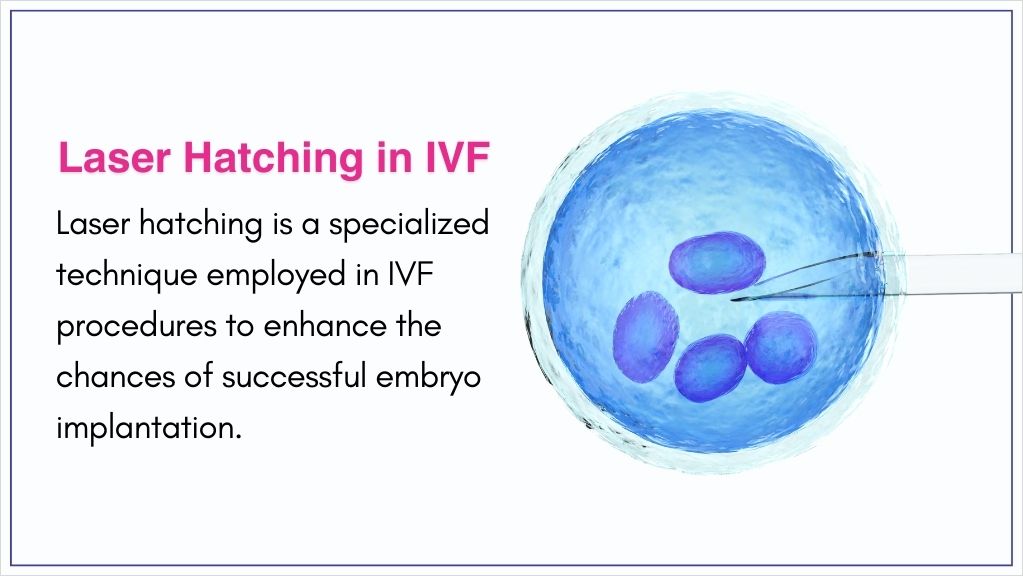
Laser hatching is a specialized technique employed in In Vitro Fertilization (IVF) procedures to enhance the chances of successful embryo implantation. In the complex world of assisted reproductive technologies, laser hatching has emerged as a crucial tool, offering a precise and controlled method to create an opening in the protective shell surrounding the embryo, known as the zona pellucida. In this blog with Gaudium IVF, the Best IVF Clinic in Bengaluru we will discuss various aspects of laser hatching technique in IVF.
Zona Pellucida
The zona pellucida is a vital barrier that surrounds the early-stage embryo, providing protection and support during its development. However, for successful implantation to occur, the embryo must hatch or break through this protective layer before attaching to the uterine lining. In cases where the zona pellucida is abnormally thick or hardened, as seen in certain infertility conditions, the natural hatching process may be impeded.
This is where laser hatching comes into play. The procedure involves the use of a focused laser beam to create a small opening or thinning in the zona pellucida, facilitating the embryo’s exit. The precision of the laser allows for controlled modifications to the zona pellucida without causing harm to the developing embryo.
Indication of Laser hatching
One of the primary indications for laser hatching is recurrent implantation failure (RIF). Couples experiencing repeated unsuccessful IVF attempts may benefit from this technique, as it addresses specific challenges related to the embryo’s ability to breach the zona pellucida. Laser hatching has shown promising results in improving implantation rates and, consequently, increasing the likelihood of a successful pregnancy in cases where traditional IVF methods may have fallen short.
Procedure
The procedure is typically performed shortly before the embryo transfer stage in the IVF process. After the embryos have developed for a few days in the laboratory, they are assessed for quality and viability. Once a suitable embryo is identified, the laser hatching procedure is carried out with precision to create an opening in the zona pellucida.
While laser hatching has demonstrated effectiveness in certain cases, it’s essential to note that it is not a one-size-fits-all solution. Careful patient selection and thorough evaluation are crucial to determining the appropriateness of this technique for each individual case. Additionally, the expertise of the fertility clinic and the skill of the embryologist performing the procedure play significant roles in its success.
As with any medical intervention, there are potential risks associated with laser hatching, such as damage to the embryo or unintended effects on subsequent development. However, advancements in technology and the refinement of techniques have minimized these risks, making laser hatching a relatively safe and well-established component of the IVF process.
In conclusion, laser hatching in IVF represents a valuable advancement in assisted reproductive technologies, offering a targeted approach to overcome specific challenges related to embryo implantation. While it is not a universal solution, the judicious use of laser hatching in selected cases has provided renewed hope for couples facing recurrent implantation failure, contributing to the ongoing evolution of fertility treatments.



